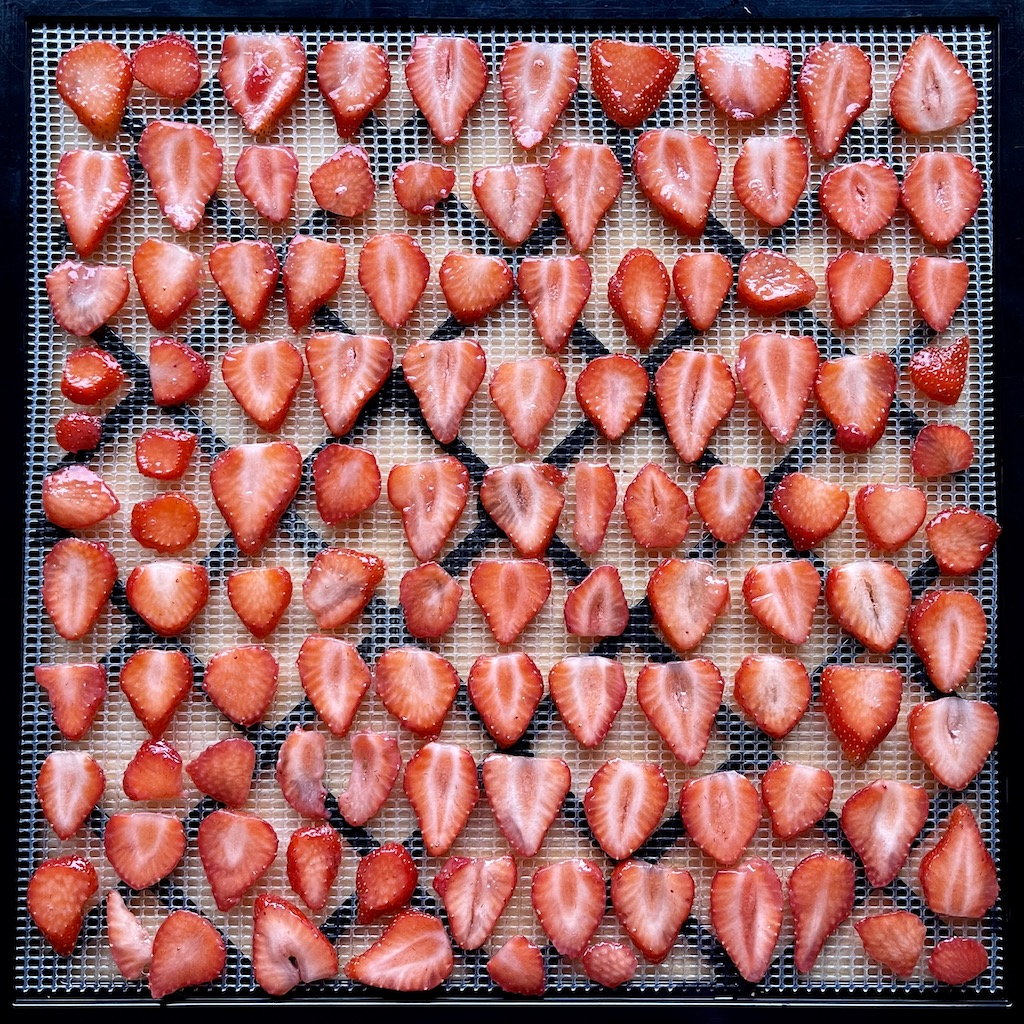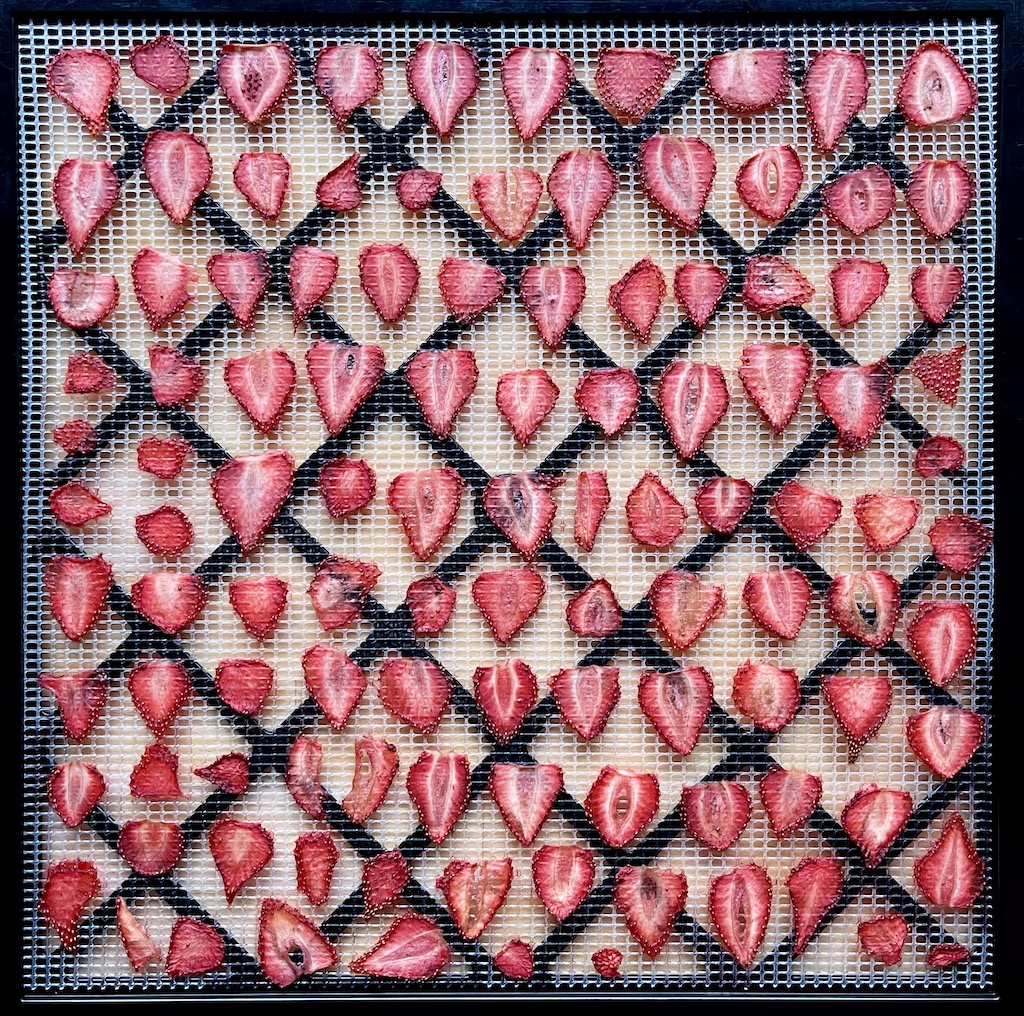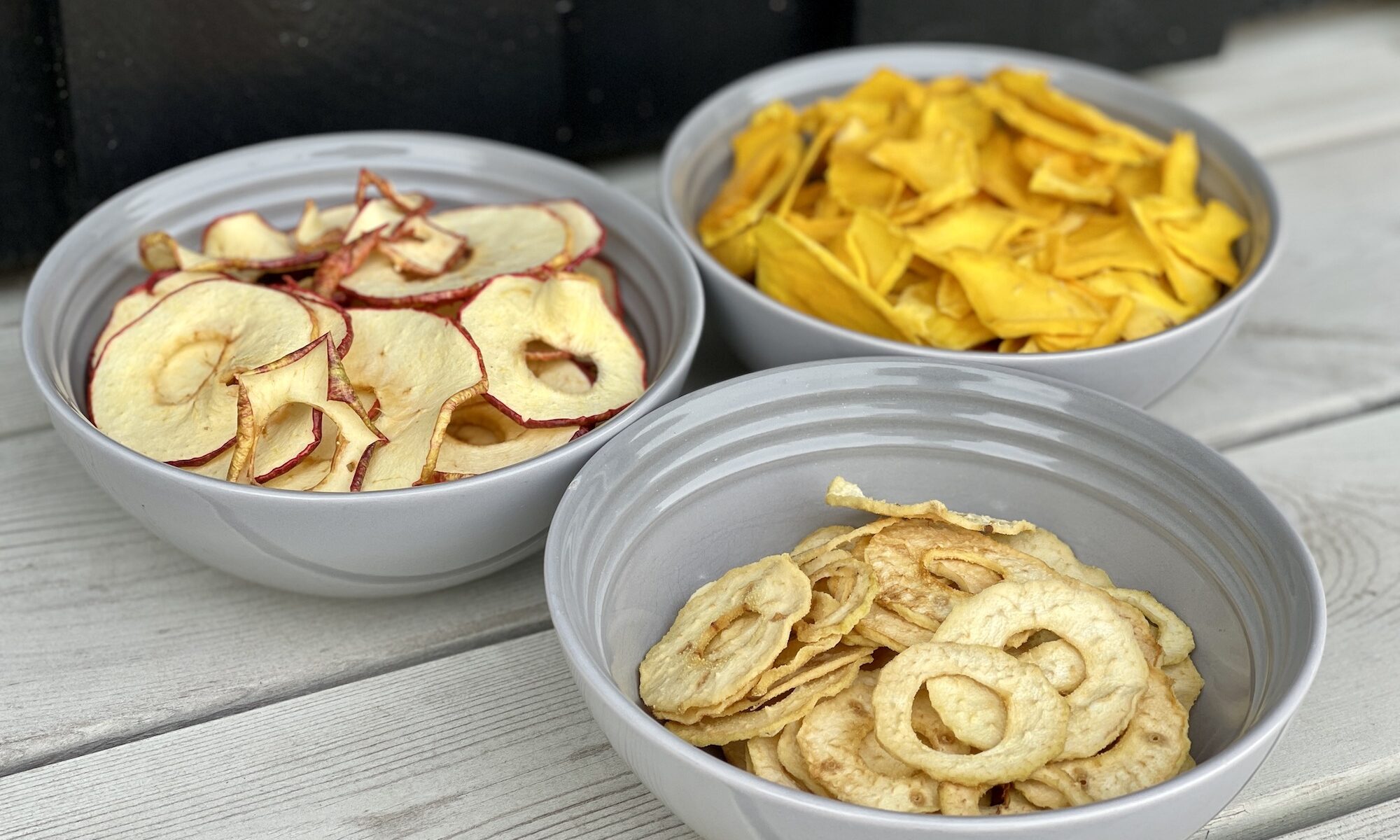Dried fruit is a fantastic snack to bring on a hike. Dried fruit can also be used in various desserts and breakfast blends. When fruit is dried, its volume and weight are greatly reduced without compromising its nutrients. Dehydrating fruit is very easy! On this page, you’ll find an overview of different types of fruit that can be dehydrated, along with tips and tricks on how to do it.
Slicing fruit evenly
To ensure even drying, it’s important to slice fruit into evenly sized pieces. Irregularly sized slices will result in varying drying times.
Useful kitchen tools
A mandoline is my go-to tool for slicing fruit. It’s efficient for handling large quantities, and you can adjust the thickness of the slices. For removing cores from apples and pears, a corer is a useful tool. And if you need to peel fruit, a peeler is a convenient option.
Conditioning dehydrated fruit
To ensure that the fruit is dry enough, store it in a jar and shake it daily during the first week. If the fruit sticks together, it is not yet dry enough and should be returned to the dehydrator. Similarly, if there is any condensation forming in the jar, the fruit is not yet dry enough.
Dehydrating apples
When dehydrating apples, I peel them only if they are not organic, to avoid high concentrations of pesticides. For organic apples, peeling is not necessary. To prevent the apples from turning brown, I dip each slice in a mixture of water and fresh lemon juice. While you can add flavors like cinnamon, honey, sugar, vanilla extract, and more, I prefer to dry the apples as they are.
- Slice thickness: 5 mm
- Temperature: 57°C
- Drying time: 7-9 hours
- Once fully dried, the apple slices should be leathery in texture and not stick together during storage.
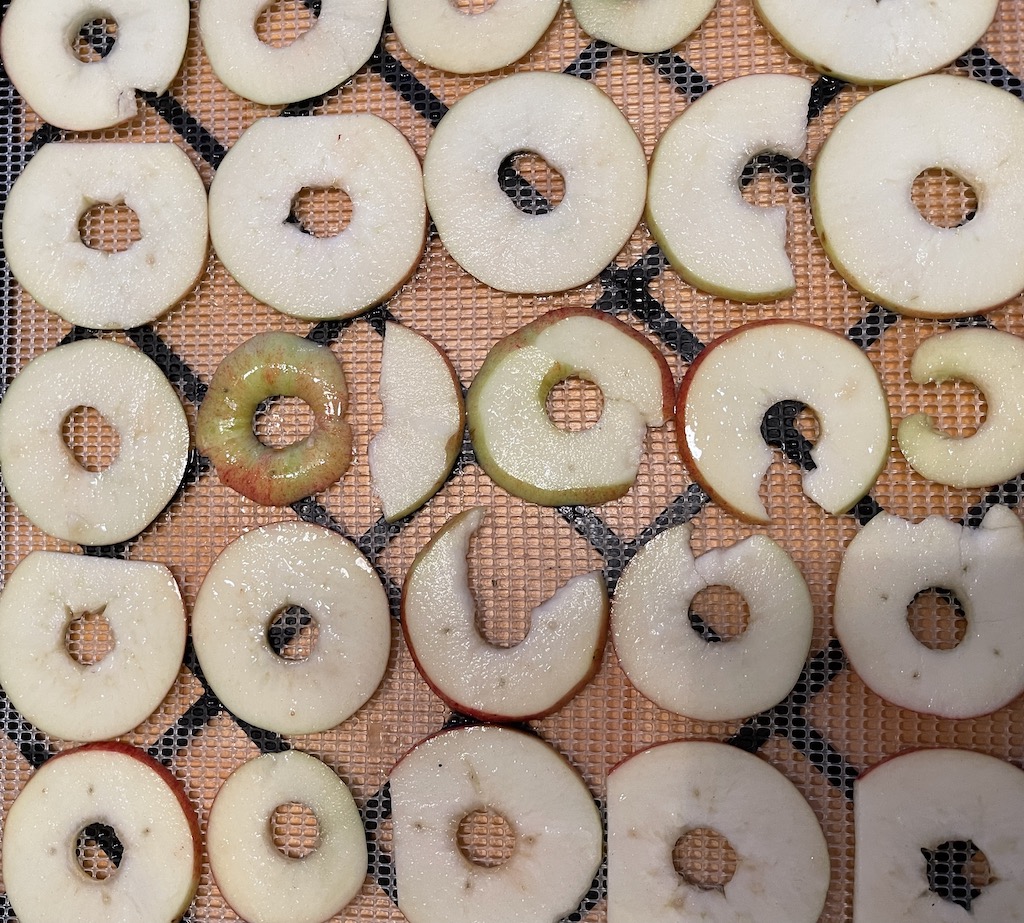
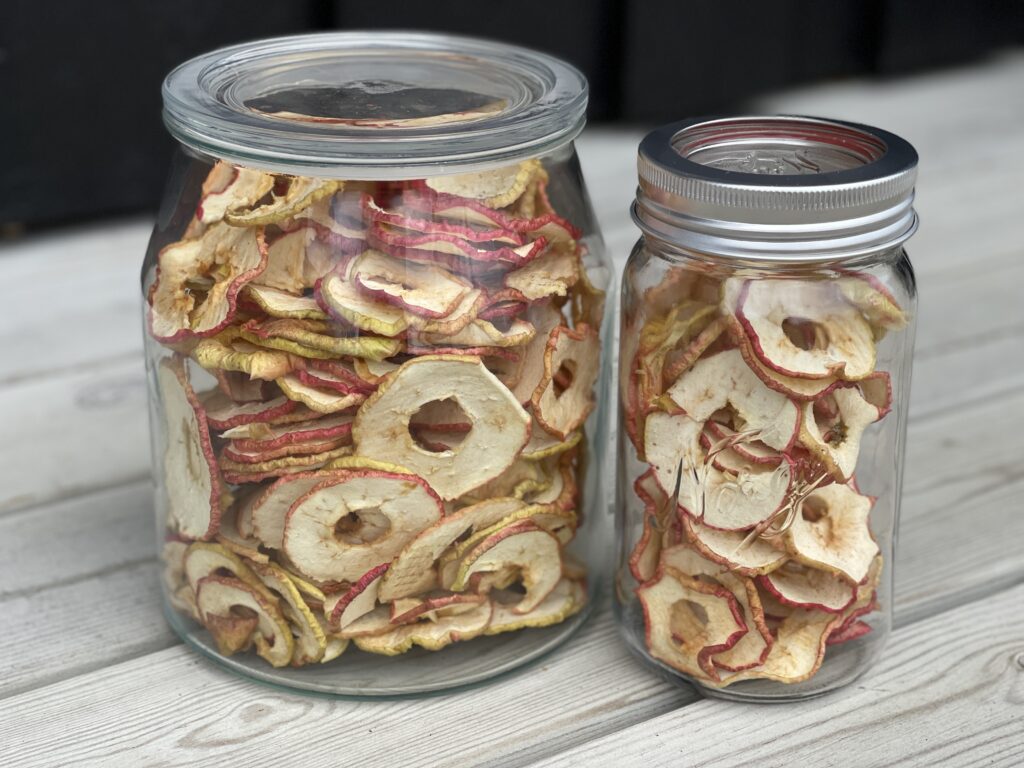
Dehydrating bananas
To prevent the banana slices from turning brown, I dip each slice in a mixture of water and fresh lemon juice.
Slice thickness: 1 cm Temperature: 57°C Drying time: 7-9 hours The banana slices should be hard and crispy when finished drying.
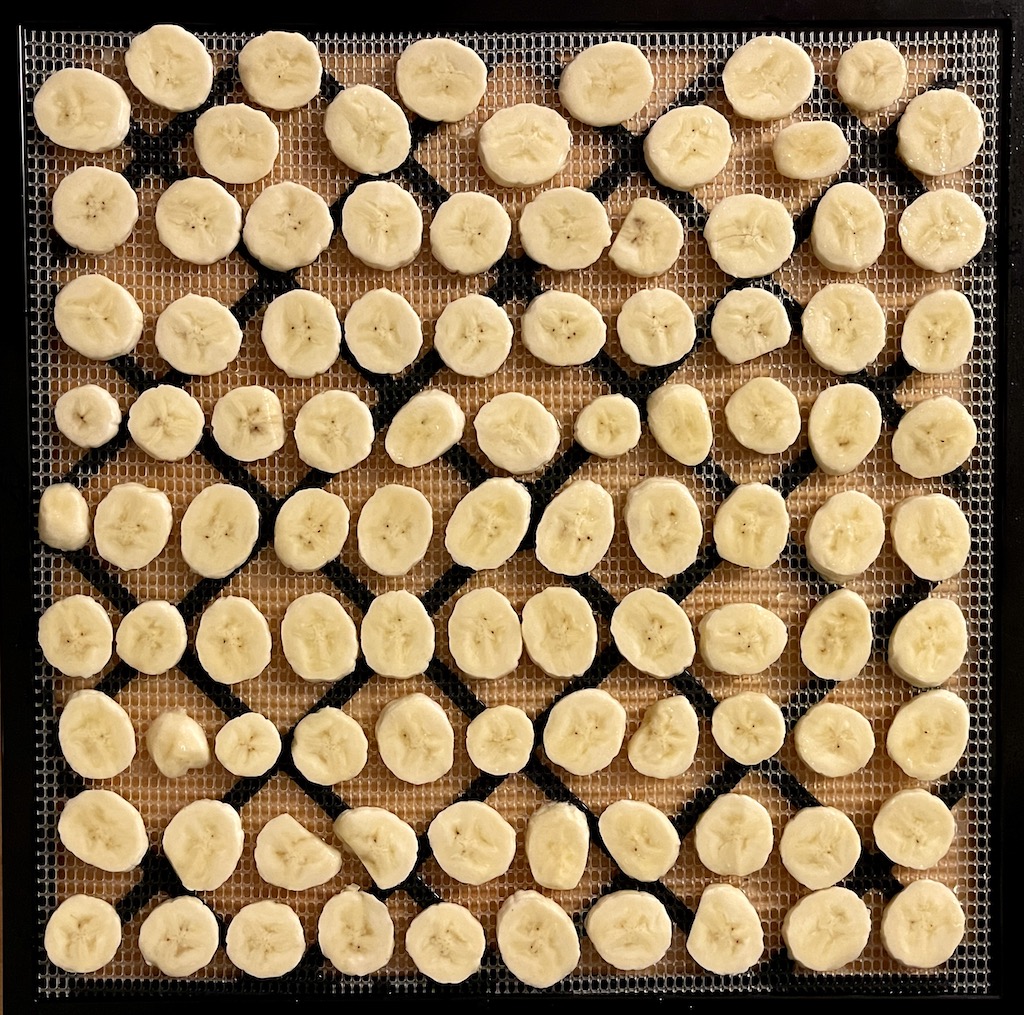
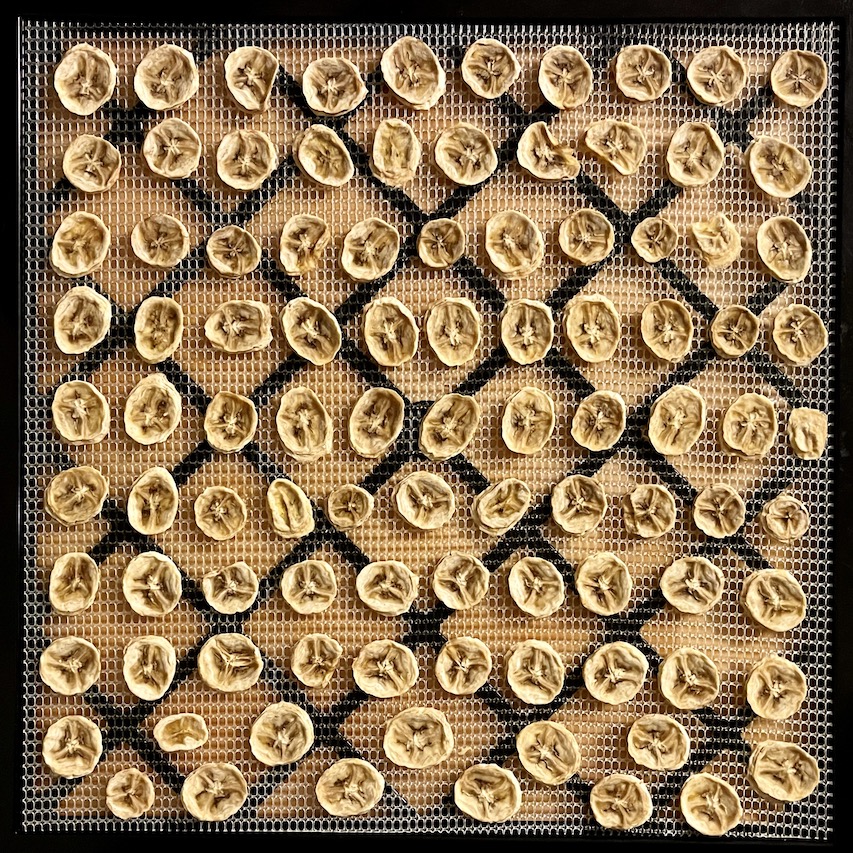
Dehydrating kiwis
- Slice thickness: 5 mm
- Temperature: 57 °C
- Drying time: 7-9 hours
- The kiwi slices should be leathery when dried. They should not stick together during storage.

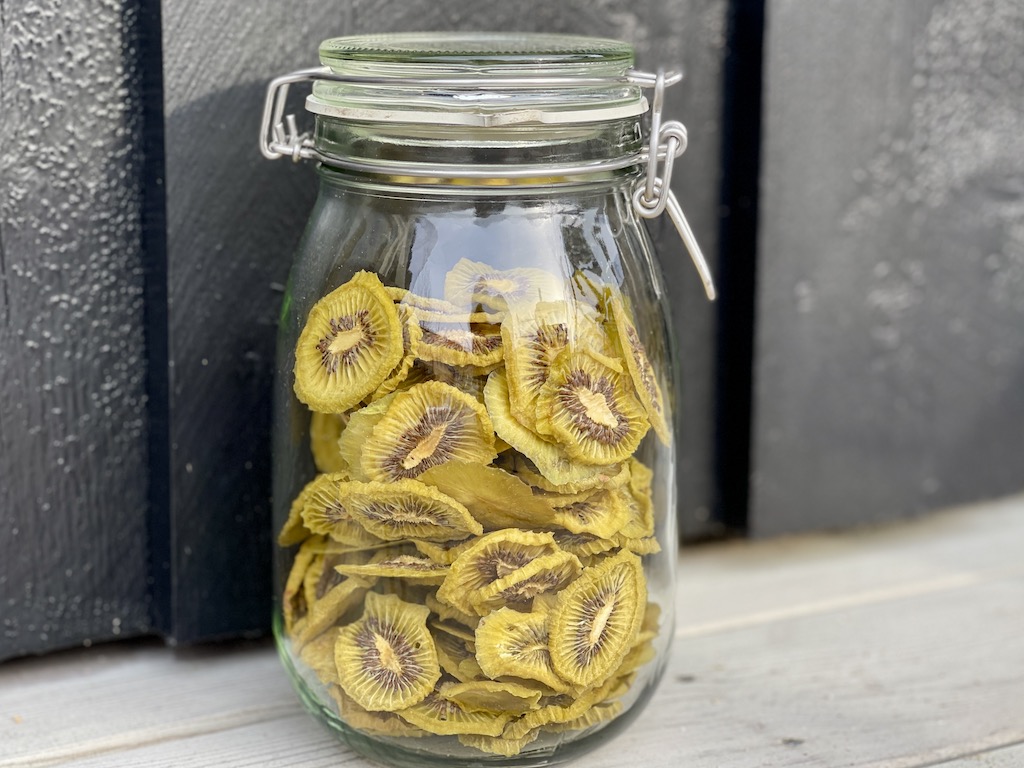
Dehydrating pineapple
Both fresh and canned pineapple can be dried. I find it convenient to dry canned pineapple. It’s important to drain the pineapple slices in a colander to remove as much juice as possible. I also use a Paraflexx dehydrator sheet during the initial drying phase, as pineapple is very sticky and can leak juice onto the dehydrator trays. After about 12 hours, I remove all the Paraflexx sheets and flip all the slices over before continuing the drying process.
- Temperature: 46 °C
- Drying time: 20 to 24 hours
- Flip the pineapple slices after 12 to 16 hours and remove the Paraflexx baking sheets.
- On an Excalibur dehydrator tray, you can fit 4 cans of pineapple slices.
- When fully dried, the pineapple slices will have a leathery texture. They may still appear slightly sticky due to their high sugar content, but they should not stick together during storage.
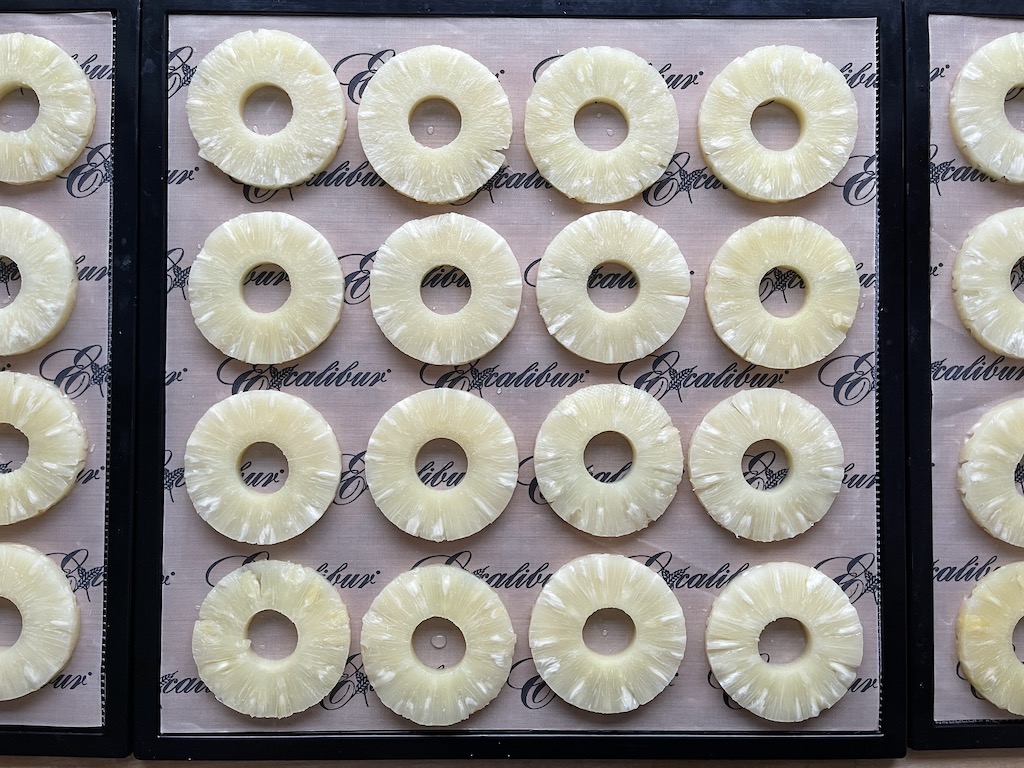
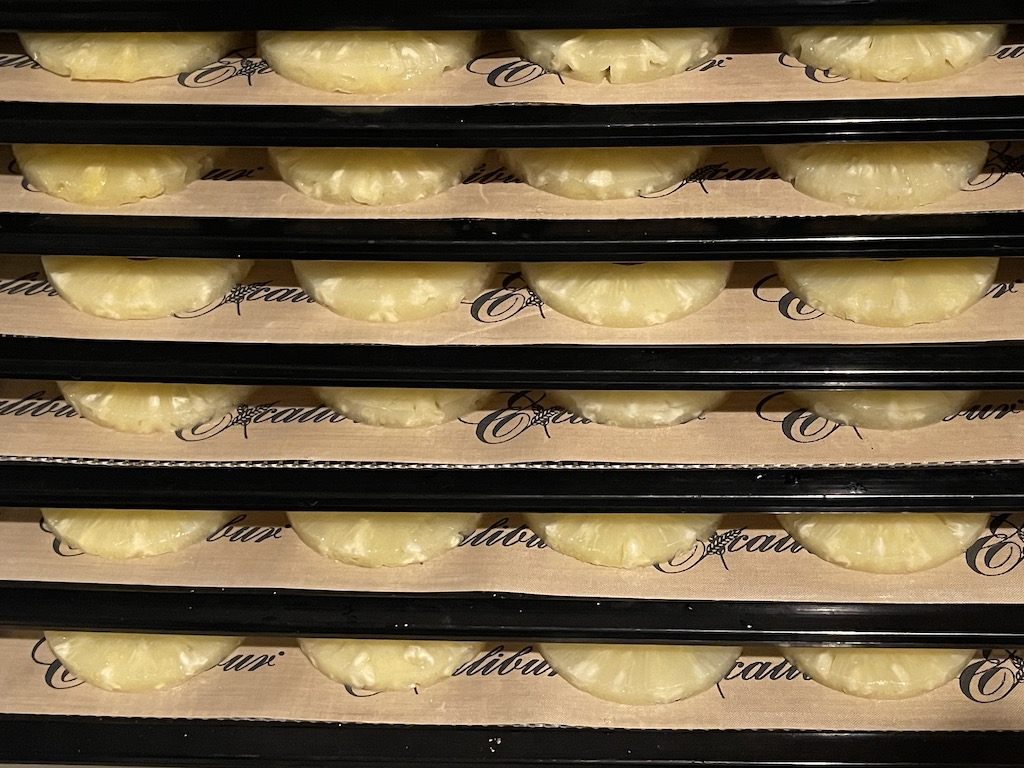
Dehydrating mango
Dried mango is a heavenly snack, and although it takes a bit more effort to slice the mango into evenly sized pieces, it’s definitely worth it.
- Slice thickness: 1 cm
- Temperature: 57 °C
- Drying time: 9-12 hours T
- he mango slices should be leathery when fully dried. They should not stick together during storage.

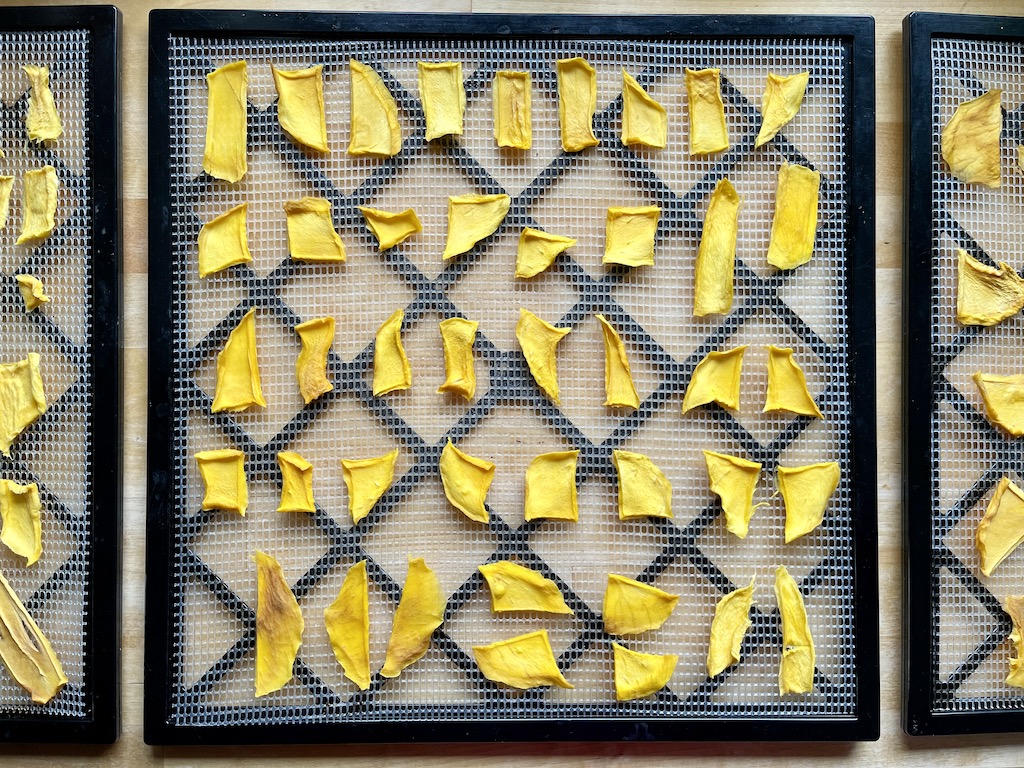
Dehydrating pears
Dried pears are a tasty and healthy snack, ideal for outdoor adventures. To keep them from browning, I dip each slice in lemon juice.
- Slice thickness: 5mm
- Temperature: 57°C
- Drying time: 7-9 hours
- When the pears are fully dried, they will have a leathery texture and won’t stick together when stored.
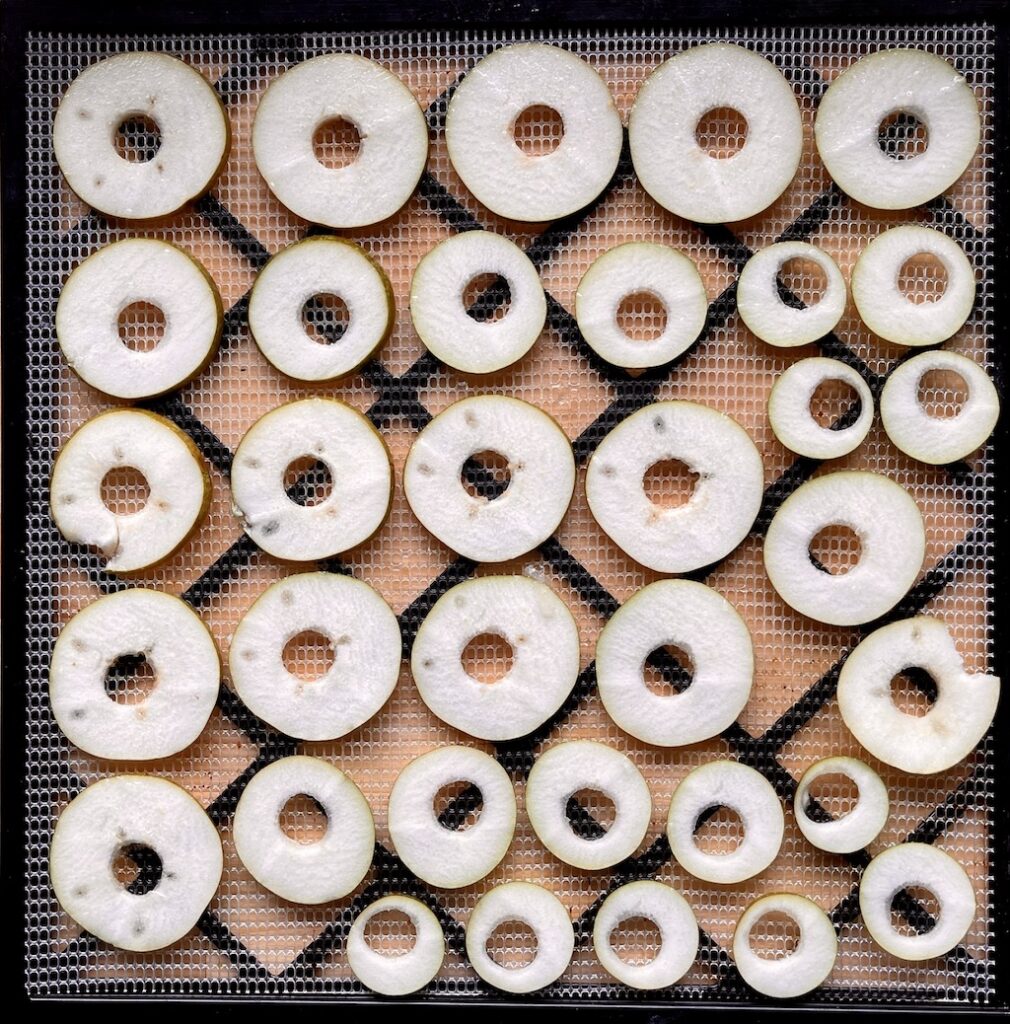

Dehydrating oranges
There are so many things you can do with dried oranges. How about adding it to your drink for som extra flavor? Or just a refreshing snack while on a hike? . You can also grind them into a powder to add to smoothies or breakfast cereal. Remember to remove the peel before dehydrating if you plan to make orange powder.
- Cut the orange into ½-cm-thick slices.
- Temperature: 57 °c
- Drying time: 7-9 hours
- The orange slices are fully dried when snap in half. The peels will be crunchy.
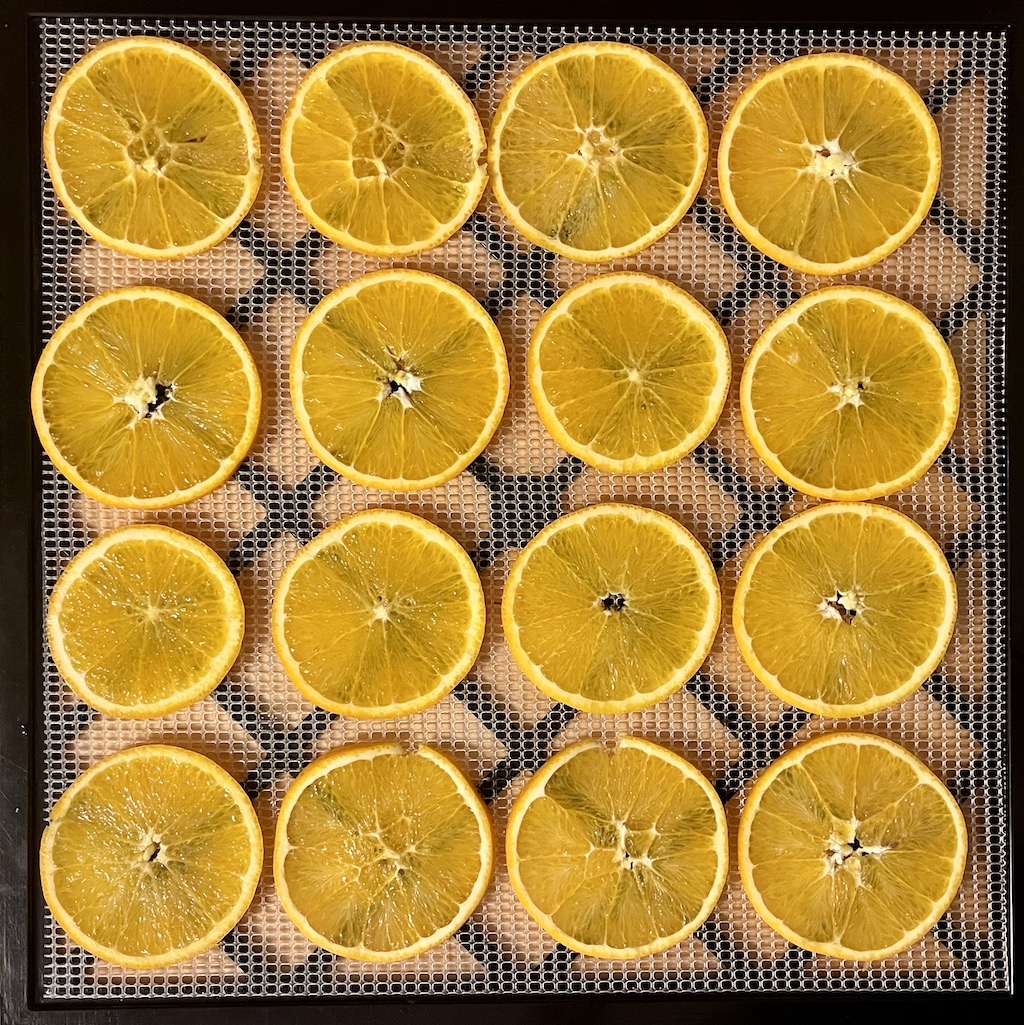
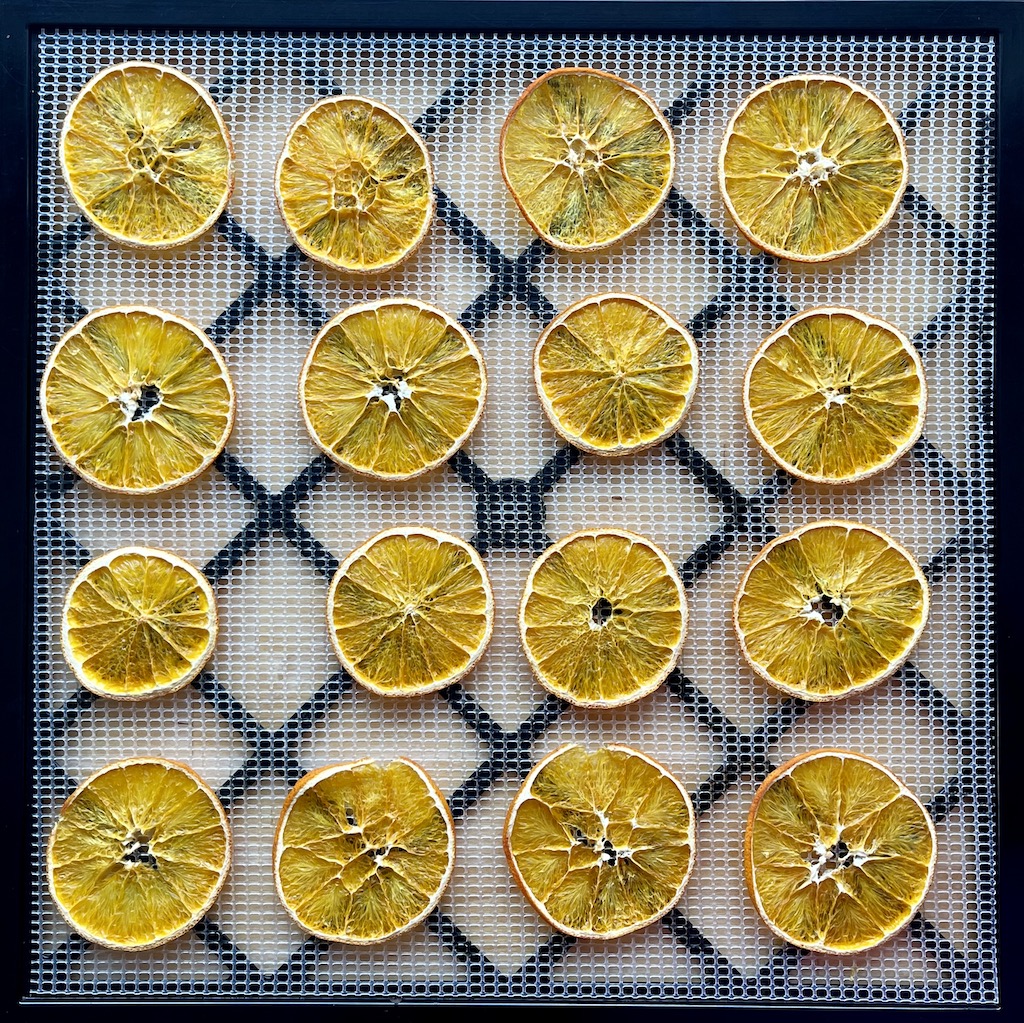
Dehydrating strawberries
Dehydrating strawberries is simple and they make a delicious and versatile fruit. Dried strawberries are perfect for snacking, adding to breakfast cereals, or using in fruit desserts. To ensure the best results, only select fully ripe berries when dehydrating.
- Cut the strawberries into ½-cm-thick slices.
- Temperature: 57 °c
- Drying time: 6-11 hours
- The strawberries are dry when they are leathery or crisp if you want to use them as chips.
